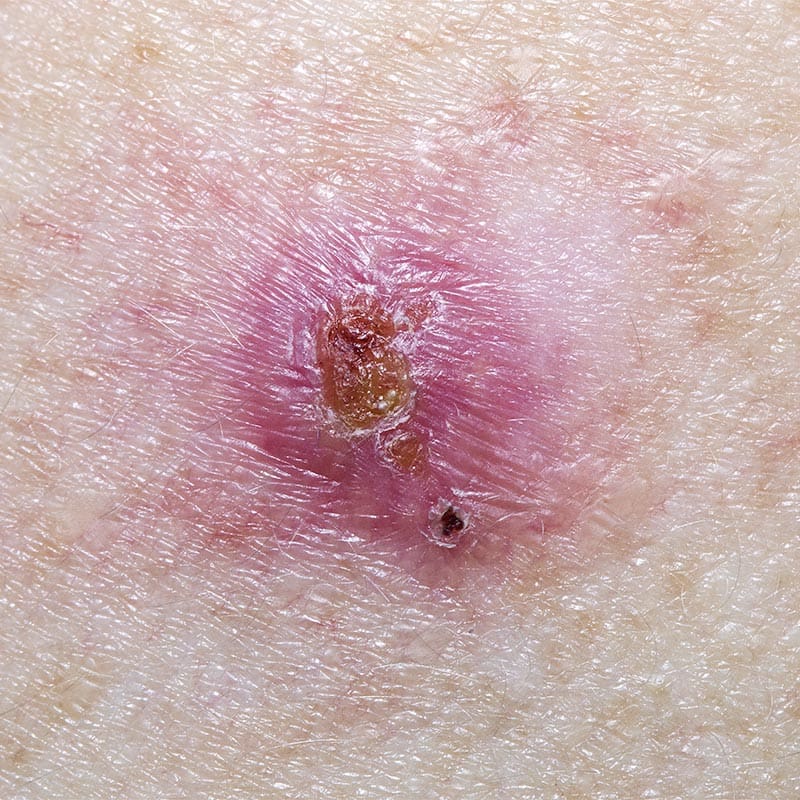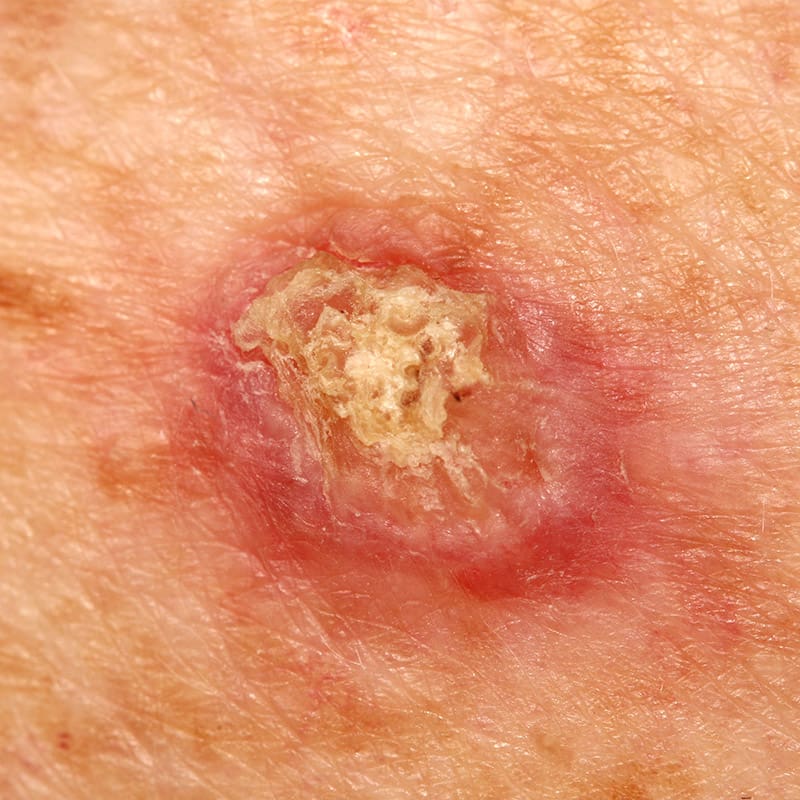There are three main types of skin cancer: basal cell carcinoma (BCC), squamous cell carcinoma (SCC), and melanoma. BCC and SCC are non-melanoma skin cancers, which are less dangerous than melanoma, but still require prompt treatment. Melanoma is the most dangerous type of skin cancer, as it can spread quickly to other parts of the body and become life-threatening.

Melanoma
This represents about 5% of all skin cancers. Melanoma is the rare but is the most dangerous type of skin cancer, as it can spread quickly to other parts of the body and become life-threatening. It is the leading cause of death from skin disease, representing 75% of all death from skin cancers. This type of skin cancer is caused by uncontrolled growth of the pigment cells due to genetic changes, starting in the epidermis then continue to grow and invades into surrounding dermis. From the dermis, it can potentially spread into the lymphatic system and subsequently other parts of body.
Unlike BCC and SCC, Melanoma can occur anywhere on the body. Melanoma can start as a new mole on any parts of the body or growing within an existing benign mole. Typically, melanoma appeared as a brown mole with dark specks, a mole with irregular border, or a changing mole in their shape, size or colour. Melanoma can also appear as a red, while or blue cyst. Rarely, dark lesions on the palm or sole of feet and dark growth under the nails can also represent a growing melanoma lesion. Melanoma is the most common cancer and the leading cause of cancer death in young adult under the age of 40 years old.

Basal Cell Carcinoma (BCC)
This represents about 80 to 85% of all skin cancers. BCC affects cells in the lower layer of the epidermis and tends to grow locally in the skin. Typically, BCC appeared as a either a red patch, persistent open sore, shinny or waxy bumps or as an ulcer with a pearly raised margin. They are most commonly found on sun exposed skin area, such as the head, neck and arms. This type cancer tend to be locally invasive, but if left untreated, can slowly erode to surrounding tissues and spreading to distant organs.

Squamous Cell Carcinoma (SCC)
This represents about 10% of all skin cancers. SCC affects the cells in the middle layer of the epidermis. It is more aggressive than BCC in causing local tissue erosions, but can rapidly spread to the lymphatic system and later to other organs. Typically, SCC appeared as over sun-exposed area as a flat scally or crusty red patch, or a firm red nodule or cystand later into an ulcer or lump.




